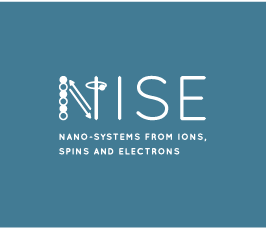The Versatility of Perovskite Materials for Optoelectronics
e-Lecture
- Datum: 14.09.2021
- Uhrzeit: 15:00
- Vortragender: Prof. Michael Saliba
- Institute for Photovoltaics (ipv) University of Stuttgart, and Research Center Jüllich, Germany
- Ort: Zoom

Perovskite solar cells (PSCs) have created much excitement in the past years and attract spotlight attention. This talk will provide an overview of the reasons for this development highlighting the historic development as well as the specific material properties that make perovskites so attractive for the research community.[1-3]
The current challenges are exemplified using a high-performance model system for PSCs (multication Rb, Cs, methylammonium (MA), formamidinium (FA) perovskites).[2,3] The triple cation (Cs, MA, FA) achieves high performances due to suppressed phase impurities. This results in more robust materials enabling breakthrough reproducibility.
Through multication engineering, usually not-considered alakali metals, such as Rb, can be studied[5] resulting in one of the highest voltages compared to the bandgap. Polymer-coated cells maintained 95% of their initial performance at elevated temperature for 500 hours under working conditions, a crucial step towards industrialisation of PSCs.
To explore the theme of multicomponent perovskites further, molecular cations were re-evaluated using a globularity factor. With this, we calculated that ethylammonium (EA) has been misclassified as too large. Using the multication strategy, we studied an EA-containing compound that yielded a high open-circuit voltage of 1.59 V. Moreover, using EA, we demonstrate a continuous fine-tuning for perovskites in the "green gap" which is relevant for lasers and display technology. [6]
The last part elaborates on a roadmap on how to extend the multication to multicomponent engineering providing a series of new compounds that are highly relevant candidates for the coming years, also in areas beyond photovoltaics, for example for medical scintillation detectors.[6,7]
Bio:
Prof. Michael Saliba is a full professor and the director of the Institute for Photovoltaics (ipv) at the University of Stuttgart, with a dual appointment at the Research Center Jülich, Germany. His research focuses on a deeper understanding and improvement of optoelectronic properties of photovoltaic materials with an emphasis on emerging perovskites for a sustainable energy future. Since 2021, Michael is the Speaker of the DFG Graduate School (GRK) 2642 for “Quantum Engineering”.
Previously, Michael was at TU Darmstadt, Fribourg University and a Marie Curie Fellow at EPFL, Switzerland with research stays at Cornell and Stanford. He obtained his PhD at Oxford University and MSc degree at Stuttgart University together with the Max Planck Institute for Solid State Research.
Michael has published numerous works in the fields of plasmonics, lasers, LEDs and perovskite optoelectronics. He is listed as ISI Highly Cited Researcher since 2018. He was awarded the Heinz-Maier-Leibnitz prize by the German Research Foundation (DFG) and named as one of the World’s 35 Innovators Under 35 by the MIT Technology Review. He is a Member of the German National Young Academy (Junge Akademie, hosted by the BBAW and Leopoldina).
Join Zoom Meeting
https://zoom.us/j/96837892846?pwd=TFVCYkxXVjhBOHRiZExDYzNHdzcvZz09
Meeting ID: 968 3789 2846
Passcode: 615902